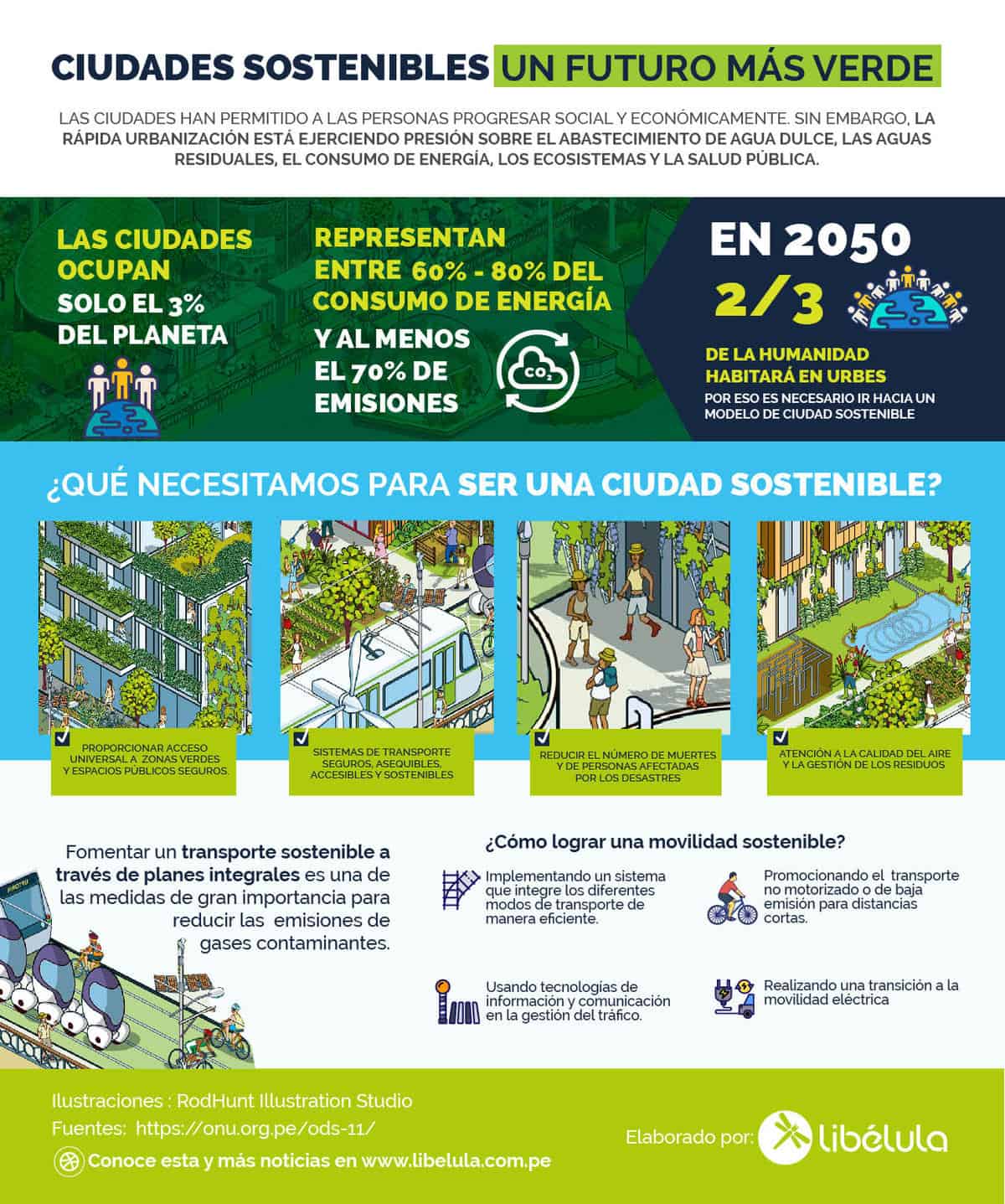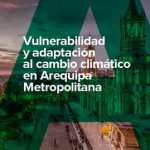Sustainable cities: a greener future
Publication file
- Year
- 2019
- Institución
- Libelula
- Type
- Infographics
- Temática
- CitiesSustainable mobility
What are Lima's challenges for sustainable transport?
According to the United Nations Development Program, cities occupy only 3% of the world's territory, but account for 60% to 80% of energy consumption, and at least 70% of greenhouse gas (GHG) emissions, which give rise to one of the greatest problems facing humanity in this century: climate change.
In cities, transportation is one of the largest sources of GHG emissions (in the city of Lima it is the largest*) and, at the same time, the cause of other environmental and health problems. Last year, the city of Lima was declared the second capital of Latin America with the highest level of urban air pollution by the World Health Organization. This means that there are high concentrations of polluting gases that have a negative impact on the health of the population. GHG emissions and pollutants in our city have a lot to do with the state of our vehicle fleet, the lack of an efficient integrated transportation system, the lack of traffic management, the quality of our fuels, among other aspects.


